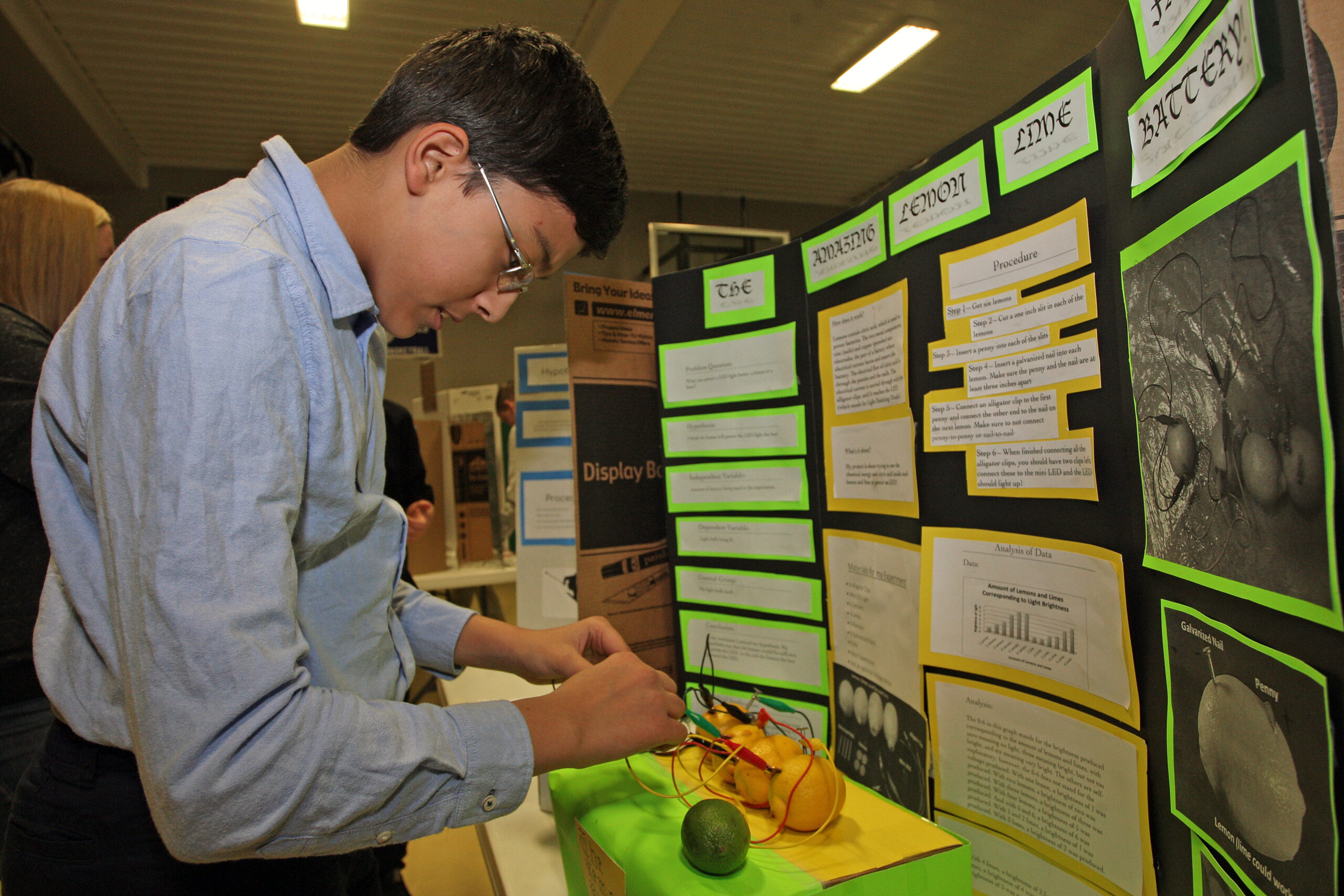
HOULTON, Maine — Students from Greater Houlton Christian Academy showed off their scientific prowess on April 9 during the school’s annual science fair.
“We start with the seventh-grade and the students get to practice the scientific method and have to come up with their own project,” GHCA Headmaster Tom Zimmerman said. “They learn how to use a scientific method. It is a challenge for the students and their families.”
Because GHCA is a Christian school, each student also must include a Biblical verse that somehow connects with their project.
“The students do a fair amount of research before they decide what it is they really want to do,” Zimmerman said. “We encourage those who struggle to come up with an idea by asking them, ‘What is it you wonder about?’ The older you get, it seems the fewer questions you ask, so this is just a great exercise to formulate some thoughts that go beyond the classroom.”

Josh Simoes, right, a sophomore at GHCA, had one of the more colorful displays at the GHCA Science Fair Tuesday, April 9, as he came up with determining whether black was actually a color or the absence of color. Listening to Simoes explain his project is GHCA Headmaster Tom Zimmerman. (Joseph Cyr | Houlton Pioneer Times)
Students were divided into two groups — grades 7-8 and grades 9-10 — for the purpose of judging exhibits at the science fair.
Top finishers for junior high were: 1, Anton Mowrey; 2 (tie), Samuel Duff and Vir SinghRanger; and 3, Sadie Thompson. Honorable mentions were given to Grace Flewelling, Anicia Whited and Drew Duttweiler.
Top finishers for grades 9-10 were: 1, Jessica Quint; 2, Alyssa Nightingale; and 3, Joel Carmichael.
Silas Nadeau, a seventh-grader, based his project on how baking soda and vinegar react chemically to release gas. His display included a balloon affixed to the top of a soda bottle.
“I wanted to see if keeping vinegar constant, while increasing the amount of baking soda would still make a balloon bigger (with gas),” he said. “My conclusion was that it did.”
SinghRanger, also a seventh-grader, based his project on how the acids in lemons and limes can be used to conduct electricity. SinghRanger said his idea was based on finding alternative sources of power.
“My goal was to discover which would power an LED better, a lemon or a lime?” he said. “In the end, I found that lemons powered the device best. This project is environmentally-friendly and easy to make.”
Josh Simoes, a sophomore at GHCA, had one of the more colorful displays as he tried to determine whether black is actually a color or the absence of color. For his project, Simoes had three colored light bulbs (red, green and blue) and placed a marker behind the lights to see what color the shadow would be.
“To test my theory, I took the three wavelenghts of light that make up white light and shined it onto a marker,” he said. “The shadows, surprisingly, were blue, green and red.”
While the blue light produced a blue shadow, the red light created a green shadow and the green light produced a red shadow.
“From this study, I concluded that black is less of a color and not the absence of color,” he said.




